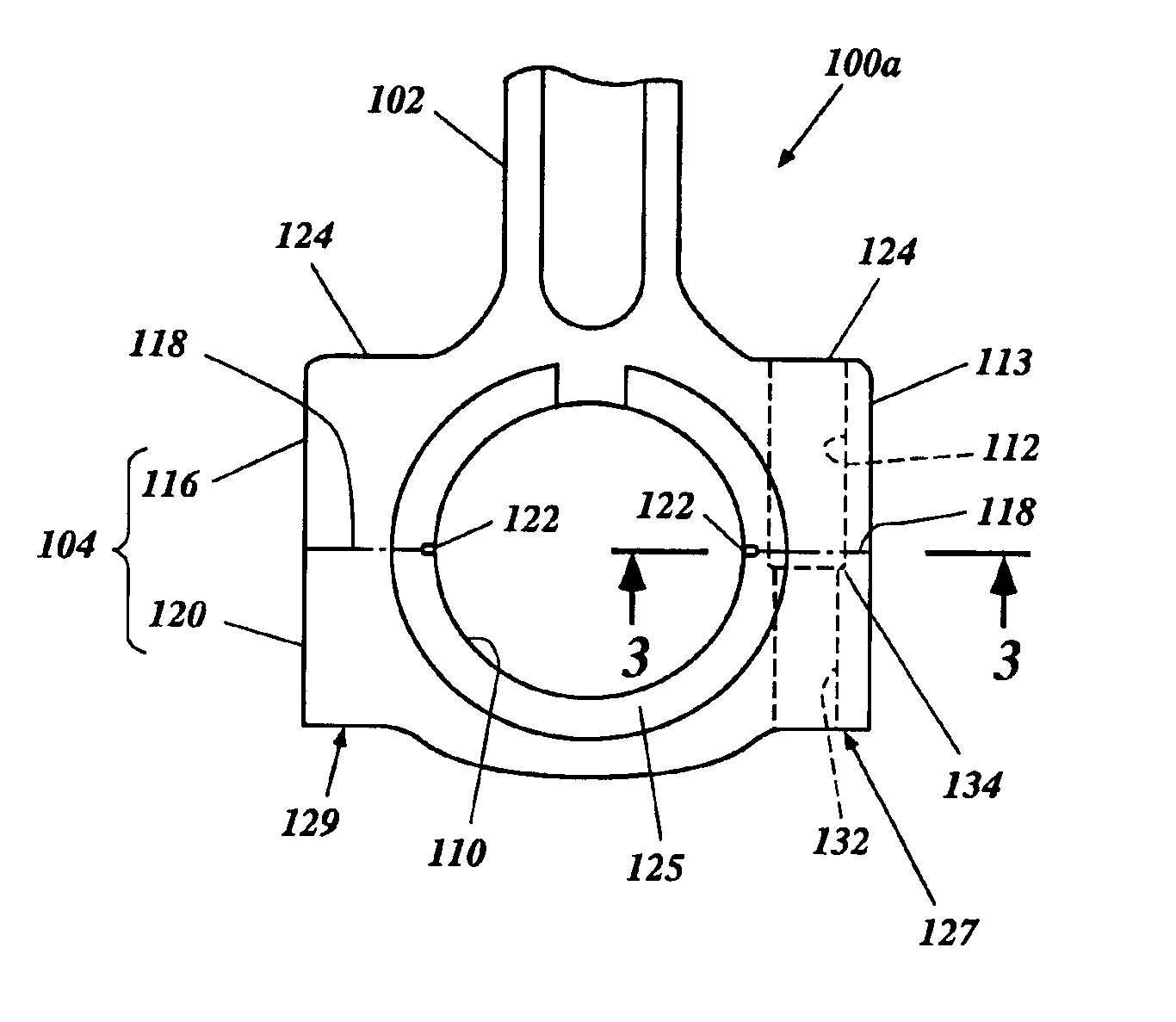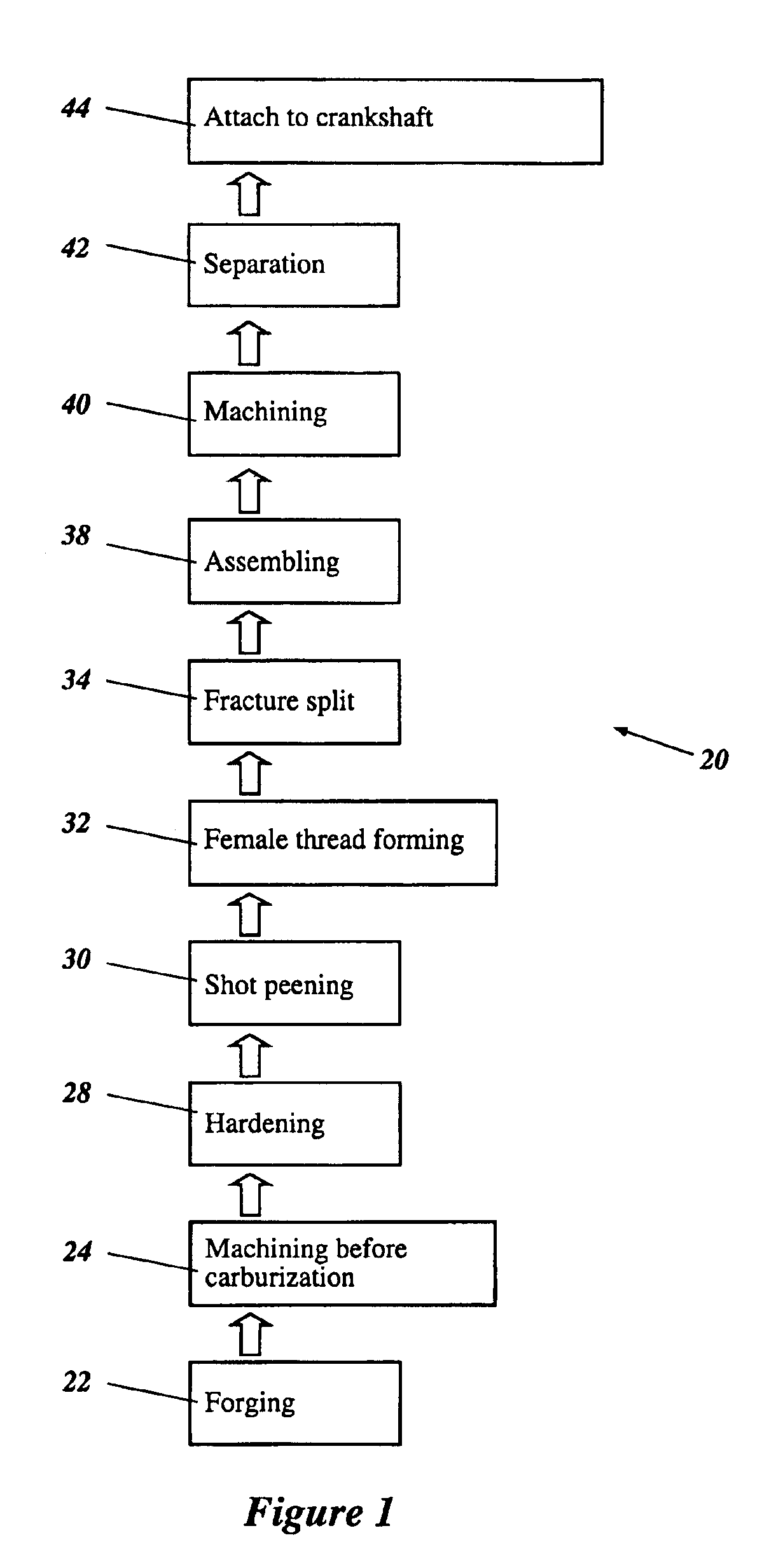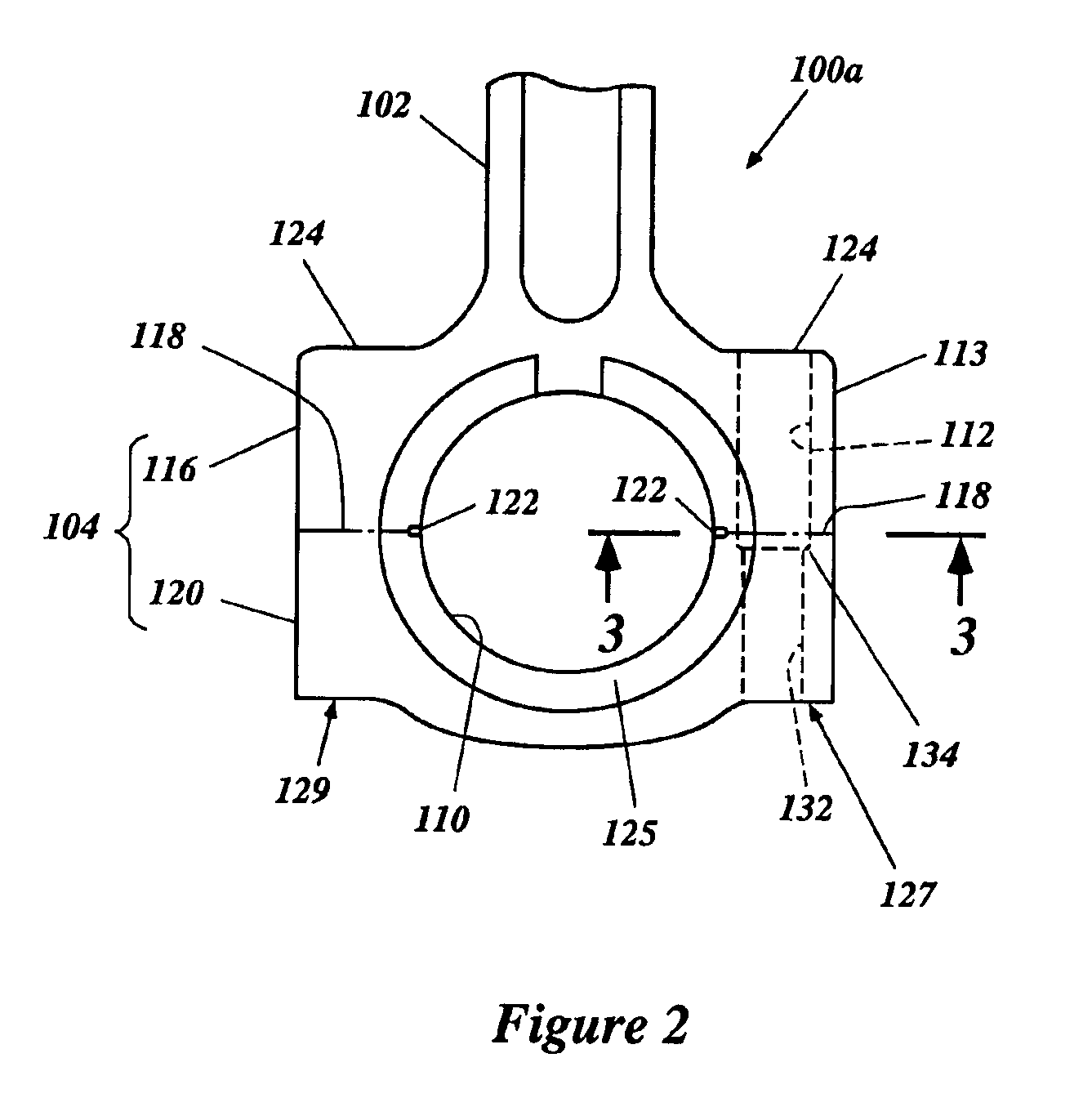Fracture split method for connecting rod
a technology of fracture split and connecting rod, which is applied in the direction of connecting rod bearings, mechanical equipment, solid-state diffusion coating, etc., can solve the problems of reducing the degree of circularity of the surface forming the crankpin hole, deformation of the big end, and various problems
- Summary
- Abstract
- Description
- Claims
- Application Information
AI Technical Summary
Benefits of technology
Problems solved by technology
Method used
Image
Examples
Embodiment Construction
[0036]The manufacturing process can be used to produce a hardened component of an engine, such as, for example, a connecting rod. FIG. 1 illustrates the preferred manufacturing steps involved in producing a connecting rod in accordance with a preferred manufacturing method 20; however, various aspects and features of the invention can be readily adapted to produce various types of components for other products. Accordingly, the illustrated manufacturing method is not meant to limit the invention, but rather to disclose one embodiment that various aspects and features of the invention can take.
[0037]By way of an initial overview, the method 20 can start by providing a connecting rod blank. The connecting rod blank preferably is created by forging the connecting rod (Step 22) and then machining the connecting rod (Step 24). The method 20 also comprises one or more surface processing steps, such as, for example, surface hardening the connecting rod (Step 28) and shot peening the surfac...
PUM
| Property | Measurement | Unit |
|---|---|---|
| temperature | aaaaa | aaaaa |
| thickness | aaaaa | aaaaa |
| thickness | aaaaa | aaaaa |
Abstract
Description
Claims
Application Information
 Login to View More
Login to View More - R&D
- Intellectual Property
- Life Sciences
- Materials
- Tech Scout
- Unparalleled Data Quality
- Higher Quality Content
- 60% Fewer Hallucinations
Browse by: Latest US Patents, China's latest patents, Technical Efficacy Thesaurus, Application Domain, Technology Topic, Popular Technical Reports.
© 2025 PatSnap. All rights reserved.Legal|Privacy policy|Modern Slavery Act Transparency Statement|Sitemap|About US| Contact US: help@patsnap.com



